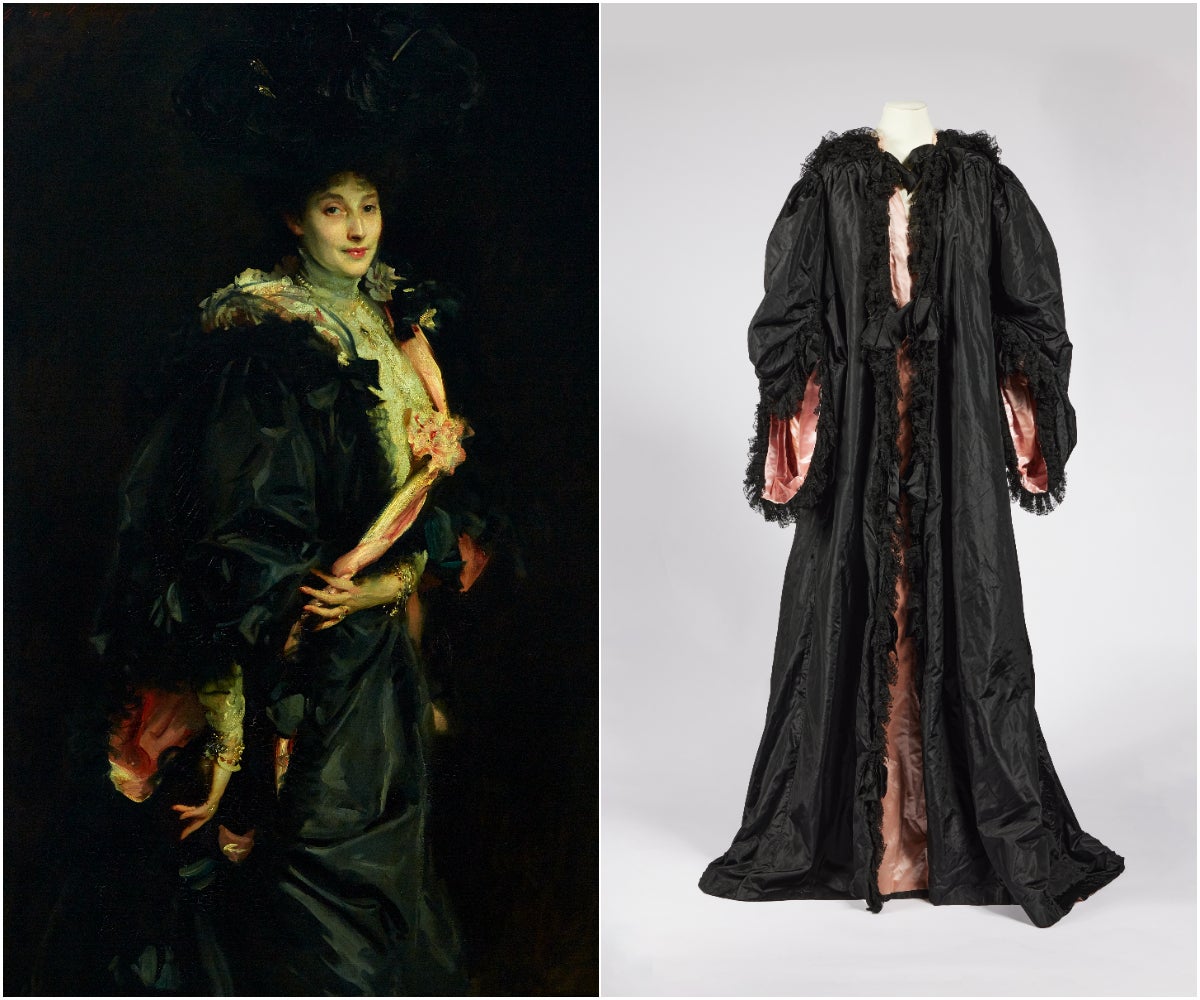Sargent and Fashion review: This sensuous show turns Tate Britain into a runway
From creamy white skirts to voluminous opera cloaks, velvet dresses and strings of pearls, Tate Britain’s dazzling look at how John Singer Sargent was part painter, part stylist is a feast for the eyes

In the penultimate room of Sargent and Fashion at Tate Britain, there’s a small painting that, to me, encapsulates the entire show. Two Girls in White Dresses (c.1911) depicts a couple of figures silhouetted against a grassy meadow in the Italian Alps. Both are modelled on the artist’s niece, Rose-Marie Ormond, but the main character here is the clothes. Three-quarters of the canvas is taken up by voluminous creamy-white skirts and patterned cashmere shawls, laid on in thick liquid strokes.
Travelling to London from the Museum of Fine Arts in Boston, this dazzling exhibition celebrates the great portrait painter John Singer Sargent’s ability not only to paint his sitters, but to style them too. Spread across nine thematic rooms are 60 works made mostly in London and Paris at the turn of the 20th century, several shown alongside the garments and accessories pictured. Opening hot on the heels of London Fashion Week, the show offers an alternative runway that invites us to reconsider the American expatriate’s work according to attire. The models include his key patrons – typically, but not always, wealthy members of high society – as well as fellow figures in the arts, politics and entertainment. And the fashion? Well, it speaks for itself.
Back to the beginning and we’re greeted by Lady Sassoon wrapped in a black taffeta opera cloak that’s displayed in a glass case nearby. Sargent’s role as stylist is evident in the way he folded the cloak back to reveal the lush pink lining – barely visible in real life – and pinned to it matching pink roses. The outfit is complete with an astonishing hat of ostrich feathers that shows off the sitter’s porcelain skin, a string of pearls and bangles on both wrists. Lady Sassoon was a lover of music and the visual arts, and the effect, as she turns towards us, is elegant and sultry.
An individual’s sartorial choices tell us plenty about their social standing and moral character, which Sargent (and his reputation-conscious sitters) well knew. While Mary Louisa Boit’s polka-dot underskirt points to her lively personality, Jane Evans, who ran a boarding house at Eton College, is suitably fierce in a tailored wool suit. Slouching against a wall and carrying a dog-eared book, the French playwright Édouard Pailleron wears a dark workman’s jacket and a white smock-like shirt, the definition of a bohemian. It wasn’t unusual for the artist to intervene in outfit decisions, recommending and vetoing clothes to suit his compositions.
The devil, as they say, is in the detail – sheer organza, the sheen of satin, a sashed waist. And to (inadvertently) dash a sitter’s status, a detail is all it takes. Viewers will probably be familiar with Madame X (1883-84), Sargent’s life-size portrait of the Louisiana-born socialite Virginie Amélie Avegno Gautreau leaning on a delicate wooden table, wearing a velvety black dress with a sweetheart neckline and a narrow waist. The jewelled straps are tantalisingly flimsy; in fact, the right strap was originally shown slipping from her shoulder, but Sargent swiftly repainted it after outraging viewers (including Gautreau’s own mother) when the work was first exhibited at the Paris Salon.

Although in commissioned portraits he had to play by society’s rules, Sargent wasn’t afraid of subverting social codes through his more personal works. My favourite room in the exhibition is dedicated to surprising and delightful pictures of progressive sitters who used clothing to flout convention. Alice Thursby is commanding and dynamic in a broad-shouldered walking dress and high-necked shirt. A brilliant little sketch of writer Vernon Lee in a buttoned-up jacket and studious spectacles wholly rejects fixed ideas of masculinity and femininity. Then there’s Samuel-Jean Pozzi, a Parisian doctor who in public dressed in fashionable suits, depicted not out and about but in a domestic interior wearing a crimson dressing gown and embroidered slippers. When it was exhibited at the Royal Academy, Lee described Dr Pozzi at Home (1881) as displaying “an insolent kind of magnificence, more or less kicking other people’s pictures into bits”.
Providing context alongside the clothes worn in the paintings are photographs of Sargent at work and accounts written by his sitters. Izmé Vickers remembered him arranging and altering fabric with pins “which often pricked”. As Edith Wharton wrote of the artist’s subjects in her 1904 short story “The Pot-Boiler”, “They’re willing to let Sargent take liberties with them because it’s like being punched in the ribs by a king.”
In 1894, fellow artist W Graham Robertson objected to wearing a heavy overcoat in the heat of summer, to which Sargent replied: “But the coat is the picture ... You must wear it.” And so, Robertson wore nothing underneath, which meant, he wrote, that he “became thinner and thinner, much to the satisfaction of the artist, who used to pull and drag the unfortunate coat more and more closely round me until it might have been draping a lamp-post.” Another thing, then, that chimes with fashion week.
Tate Britain, 22 February to 7 July
Join our commenting forum
Join thought-provoking conversations, follow other Independent readers and see their replies
Comments
Bookmark popover
Removed from bookmarks